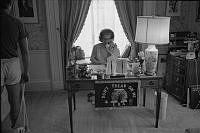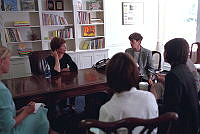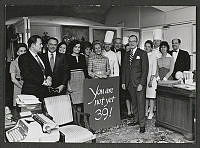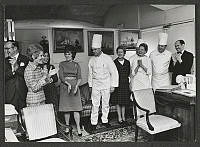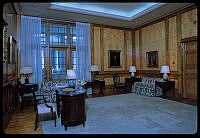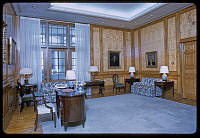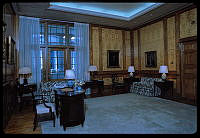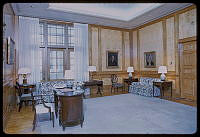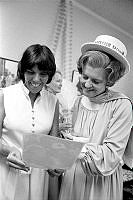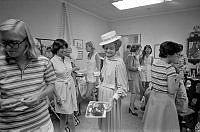|
Name
|
Numbers / References (original notation)
|
|
Abell, Mrs. Walter R. (Lydia Miller)
|
3172, 3377-3779
|
|
Abreu, Mrs. Dolores
|
2918
|
|
Acheson, John Futz
|
3686
|
|
Ackermann, Arthur & Son
|
9199, A2352, A2363/64, 3340, 36946-37419
|
|
Acquavella Gallery, Nicholas M.
|
3600
|
|
Adler, A. M.
|
3601
|
|
Aitken, Grant
|
92074
|
|
Albright Art Gallery
|
2620
|
|
Albright Art Museum
|
A1084
|
|
Albus, Charles
|
A1786
|
|
Aldrich, Mrs. Winthrop
|
3744
|
|
Allen, Frederic S.
|
2972
|
|
Allen, Mrs. Rae Porter
|
2379
|
|
American British Art Center
|
2783
|
|
Amory, Mrs. Harcourt
|
2116, 2705, 2706
|
|
Amory, Mrs. John Singleton
|
2406-7
|
|
Amster, Mrs. N.L.
|
2251/2
|
|
Antoinette Gallery, Paris
|
3194
|
|
Arnold, Mrs. Weld
|
7576/80, 2609
|
|
Art in America
|
2414-15
|
|
Art Institute of Chicago
|
A1932, 2378, 2604
|
|
Atlanta Art Assoc.
|
nan
|
|
Ault, Lee
|
2646/7, 2801, 2876, 3260, 3371, 3573, 3607
|
|
Baffyamy, Countess Magil
|
3641–3302–3806/9
|
|
Bagley, Charles
|
3149, 2341
|
|
Bagley, Horace L.
|
2172–3
|
|
Bailey, Paddy
|
3164/7
|
|
Balay & Keller (Contains Gallery)
|
3742–3931, 3279
|
|
Balay, Roland
|
A1338, 9461, 9263, 9264
|
|
Ball, A.R.
|
3291
|
|
Balsan, Mrs. Jacques
|
2799–98
|
|
Baltimore Museum of Art
|
3560
|
|
Bamber, Mrs. Knaes
|
2111, 2117
|
|
Bardes, Stanley
|
3365/70
|
|
Battell, Mrs. Walter R.
|
3175, 233, 2341, A2447, A2486, T4, 2610/13, 3614/8
|
|
Bayles, Mrs. Edith Stanley
|
3427
|
|
Bayly, W.J.
|
A2361
|
|
Bechtel, Mrs. Fred
|
3616
|
|
Becker, Fred
|
2676, 2797
|
|
Becker, Martin
|
3441/3
|
|
Beckham, Mrs. Joseph
|
2701/2707
|
|
Bensel, Mrs. Philip
|
2583, 2626, 2834
|
|
Benson, Alexander
|
7077-nnnn
|
|
Benson, Richard
|
3460
|
|
Bernstein, Henri
|
7831, 7845
|
|
Bignou Gallery, Inc.
|
2616–2650
|
|
Bingham, A.D. Jr.
|
A190
|
|
Birdsong, Mrs. M.H.
|
2701
|
|
Bisp, Mrs. Maurice
|
2088, 2089, 2090
|
|
Blanchard, Peter
|
3032
|
|
Bland Gallery
|
2705, 2715
|
|
Bleeker, J. Sacha
|
3710, 3725
|
|
Bloch, Leon
|
3181, 3176/8
|
|
Blue, Mrs. H. Preston
|
3409
|
|
Boardman, (J.P.?)
|
A976 to 617
|
|
Boccasini, Albert
|
7916
|
|
Bond, Miss Elsie M.
|
2699/90
|
|
Borecolla, A.C.
|
3337
|
|
Borie, Mrs. Playdell
|
3687
|
|
Bowles, Mrs. R.
|
3702
|
|
Boyer, Charles
|
3349/9–3364
|
|
Boynton, Eugene F.
|
2490, 2509/9, 7911
|
|
Brand, Philip Spaulding
|
A1144
|
|
Brandt, Mortimer
|
3197
|
|
Brass, Mrs. Nils
|
3164–3355
|
|
Brinsmade, Estate of Josephine S.E.
|
M1530
|
|
Brooklyn Museum
|
A1955, 1539, 3127–34, 3725/34
|
|
Brown, Mrs. Oct.
|
9117
|
|
Brown, Mrs. Philip M.
|
2885
|
|
Bruguiere, Mrs. Lois
|
1363/3–1499
|
|
Brundrett Collection (see Mrs. L. Simpson)
|
2861/69
|
|
Brunemann, Mrs. Gustave
|
3338
|
|
Brunswick, Fred
|
2401
|
|
Buchanan, Martin
|
2136, 2137
|
|
Bucholz Gallery
|
2798–4997, 3001–3779
|
|
Budde, Jane A.
|
1948
|
|
Bull, Henry I.
|
A1148
|
|
Bullett, Tom C.
|
2678/30
|
|
Bunshaft, Mrs. Grace
|
A676
|
|
Burchman, A.
|
3458
|
|
Burkaw, Clifford V.
|
2160, 2161, 3405/6
|
|
Burke, Frank
|
1169/90
|
|
Burke, St. John
|
2456, 2575
|
|
Burke, Stevenson
|
2937
|
|
Burroughs, Mrs. Bryson
|
2534
|
|
Burscheidt, Estate of Albert
|
C2160
|
|
Butterick, Mrs. Dunbar W.
|
2481–2, 2512–13
|
|
Byrne, Eugene
|
3165
|
|
Caballos, Miel H.
|
2203
|
|
Capt. Thomas J.
|
2476–2461
|
|
Carden, Judge George (Mrs. Rae Porter, Cond.)
|
2418
|
|
Carlan
|
9193, 2535, 2536/7, 2796–2817, 3379
|
|
Carlisle, Mrs. Adele D.O.
|
2516
|
|
Carlisle, Mrs. Joseph M. (Bessie M.)
|
2515/7
|
|
Carre, Louis
|
9126, 1125
|
|
Carroll Estate (Chas A. Carroll)
|
3411
|
|
Carstairs Gallery (See Balay & Keller)
|
3245/5–3348/40–2846–3849–3648
|
|
Carstairs, Mrs. Carrell
|
3140
|
|
Cartain, Chas S.
|
C2976, 7
|
|
Cartain, Mrs. J.
|
9637/9
|
|
Cartain, Mrs. J. Isaac
|
A91, 1190
|
|
Cartain, Mrs. Nicola
|
9179/91, 1125
|
|
Cartin, Isabel
|
2968/70
|
|
Cartin, Mrs. Nicholas
|
3711–
|
|
Casadt, Gardner
|
2374
|
|
Cashman, Mrs. E.J.
|
9103, 1601/6, 1604
|
|
Catlin, Mrs. Daniel Doris
|
3133/35–3135/8–3197/500–3201/5–3204/1–3304/1
|
|
Chadwick, Mrs. C. Gerry
|
3671
|
|
Chapman, H.M.
|
2944–2941.5–2964–2969/70
|
|
Charles Parsons Clifford
|
2990/1
|
|
Charleston Museum
|
2673/4
|
|
Chelminski, Mrs. J.L.
|
C5511, 5512, 5513, 5514, 5515, 5516, 5518, 5519, 5606, 5763, 5790, 5791, 5792, 5793, 5794, C-A190, C-A702
|
|
Chessel, Ludwig
|
2937–3065–3105/7–3119–3300–3361–3676–3798
|
|
Childs, Chas D.
|
2158
|
|
Chrysler, Walter P.
|
2465
|
|
Clade, Francis
|
2336
|
|
Clarendon, Mrs. Florence P.
|
2269
|
|
Clark, Est. of Thos J.
|
2516
|
|
Clark, Mrs. Antoine L. S.Y.
|
2767
|
|
Clark, Mrs. Stanley
|
9214
|
|
Clark, Mrs. W. Irving
|
2517/8
|
|
Clark, Mrs. W.A.
|
2923–3118–3393
|
|
Clark, R.S.
|
2657–3946
|
|
Clark, Stephen C.
|
8939, 2532, 2635, 2791/2
|
|
Cleaveland, Lincoln
|
2412
|
|
Clement, Glenn R.
|
2126–3360
|
|
Clements, Charles A.
|
2490
|
|
Clifford, Henry
|
2516
|
|
Clifford, Joseph E.T.
|
2968/92
|
|
Cloughly, P.D.
|
M-2555/7
|
|
Coe, Ralph W.
|
2336
|
|
Coffin, Miss Marion C.
|
2333
|
|
Cohen, Henry
|
3245
|
|
Concert Presentations Inc.
|
2707
|
|
Concert Theatre Inc.
|
3246
|
|
Conner, C.E.
|
2787
|
|
Conover, Estate of
|
A2379
|
|
Constable, W.G.
|
2678
|
|
Conway (See Mrs. Aileen R. Whitney)
|
3247/8
|
|
Corbett, G.J.
|
3054
|
|
Corcoran Gallery
|
2127
|
|
Cordelin, Luigi
|
3433
|
|
Cordo, Charles A.
|
9637/9
|
|
Costet, Andre di
|
9126, 2169
|
|
Cowell, Mrs. Isabella M. & Mr. S.A.
|
9276
|
|
Cozier, Charles X.
|
2116, 2322–3347/9, 5376
|
|
Crabson, Hugh J.
|
2796, 2796
|
|
Cramer
|
2103, 2906
|
|
Crook, Mrs.
|
2426
|
|
Crowell, Miss Frances
|
A2372–9
|
|
Cumner, J.T.
|
9123
|
|
Dall & Richards
|
A2099, 2116, 2150, 2293
|
|
Dane, Mrs. Dwight
|
2953
|
|
Daneau, Louis
|
3320
|
|
Daniel, Charles
|
A3774
|
|
Daniels, Charles
|
1986, 2156, 2216, 2393
|
|
Daniels, Louis
|
2151
|
|
Daniels, Thomas L.
|
3267/9
|
|
Darley, Elizabeth C.
|
A2355
|
|
Darnell, Frederick B.
|
A1976
|
|
Davidson, J.A.
|
3745/67
|
|
Dayton, Price Leo
|
A2051
|
|
de Batton, Jean
|
A1616/9–3618
|
|
de Beersband, Bishop, Hospital
|
A1884
|
|
de Coppet, Andre
|
A1705 to 1769
|
|
De Gunzburg, Comtesse Jean
|
3184
|
|
De Hauke, Cesar
|
2776/8, 2980–3304
|
|
de Kerchove, Baroness R.
|
2584
|
|
de La Grange, Baroness and Mrs. Gd. Fielder
|
A2333
|
|
de Lieveree, Georges Serre
|
3668
|
|
de Murell, George
|
A1977
|
|
de Ruisse, Courture (Mrs. Paul)
|
1617
|
|
de Smirnoff, Mrs. J. Ivan
|
3069
|
|
de Wild, Dr. A. Martin
|
3181
|
|
Deane, Mrs. Thompson
|
A1919
|
|
del Rio, Mrs. Mary M.
|
xmv
|
|
Denver Art Museum
|
2840/1, 3300–3309/8, 3309/10, 3316–3410, 3745–3763, 3864
|
|
Dexton, Louise M.
|
3216
|
|
Deylar, Mrs. Barcley
|
2987
|
|
Deyo, Mrs. Anne S.
|
3107
|
|
Dickenson, Preston (No source except)
|
A1976
|
|
Dickley, Mr. Robert J.
|
2384
|
|
Dieckmann, Mrs. William B.
|
2156–2317
|
|
Dillon, Tom
|
2735
|
|
Dilworth, Mrs. Helen T.
|
2581
|
|
Dobbins, Miss Anne B.
|
2387
|
|
Donahue, Mrs. Jas P.
|
2278, 3454
|
|
Dorr, John Van Nostrand
|
2464
|
|
Dougald, Hutton
|
2533
|
|
Dougherty, Mrs. Marion Ansell
|
2589
|
|
Douglas, P.D.
|
3375
|
|
Doy, Paul
|
2536
|
|
Drager, Mrs. S.D.
|
A1624
|
|
Dunlach, Bros.
|
2545b
|
|
Dunvan Bros
|
A2044, A1935, 2338, 2344
|
|
Durand-Ruel
|
3195–3414
|
|
Earl Suzanne
|
2869
|
|
Eastman Memorial Foundation, Trustees of
|
3649/3676
|
|
Edwardes, Mrs. Malcolm
|
2427/8, 2451 incl.
|
|
Edwards, Estate of Isador
|
2805, 2823, 2894, 2906
|
|
Edwards, Mrs. James A.
|
2358
|
|
Eichhorn, Miss M.W.
|
2109
|
|
Elliot, Wm. (Mrs.)
|
2381, 2585/7, 2681, 2674/5, 3160, 3344
|
|
Eloise, Mrs. Wm.
|
2784/5
|
|
Errera, Alfred
|
3668
|
|
Erskine, Mrs. John
|
3390
|
|
Estate of Emily Vanderbilt White
|
2934
|
|
Estate of Florence Brinsmade
|
2238, 2259
|
|
Estate of H.S. Kier
|
A1142, 1143, 1146/7
|
|
Estate of Isabelle Rockefeller
|
A1184, 1185, 1186, 1261, 1268
|
|
Estate of J.H. Harding
|
A1729
|
|
Estate of J.P. Barrows
|
A1174
|
|
Estate of J.P. Morgan
|
A1997, 2010, 2027, 2036, 2037, 2039, 2040, 2041, 2042, 2047, 2048, 2049, 2050, 2053, 2055, 2056, 2057, 2060, 2061, 2062
|
|
Estate of Joseph Frelinghuysen
|
3174/5
|
|
Estate of Josephine S.E.
|
2153/32
|
|
Estate of Lloyd S. Roe
|
2994/7
|
|
Estate of Miss Connor
|
2123
|
|
Estate of Mrs. J.D. Simpson
|
A126, 127, 1189, 1190, 1940, 1945, 207, 1949, 1969/1, 2002, 2004, 1946, 1948
|
|
Estate of Mrs. Neumann
|
A1931, 1933
|
|
Estate of O. Rosenfeld
|
A1114, 1117, 1118, 1191, 1193, 1195, 1197, 1199, 1201
|
|
Estate of Timothy Eaton (Margaret W. Brinside)
|
2253
|
|
Estate of Walter Gay
|
3173
|
|
Ewart, Arthur
|
287/8
|
|
Ewing, Mrs. Thomas
|
3164
|
|
Farr, Dan
|
2957
|
|
Federau, Oscar
|
2547/8
|
|
Ferargil Gallery
|
2594, 2804
|
|
Ferguson, Miss Frances
|
2177
|
|
Ferragamo, Miss Amalia
|
A1688
|
|
Field, St. Marshall
|
3268/73
|
|
Fine Arts Associates
|
2483, 2659, 2749, 2797, 3707
|
|
Flagg, Murd A.
|
A1613
|
|
Fleischmann, Julius
|
2645
|
|
Fleischmann, Mrs. Udo M. (Jeanne K.)
|
A1341, 2741, 1357 incl.
|
|
Fleming, J.
|
3441
|
|
Fosburgh, Jas. W. – Peter W. – Hugh W.
|
2631
|
|
Foster, Palmer
|
3366
|
|
Frank, Karl August
|
2850
|
|
Frant, James L.
|
2635
|
|
Frederic W. Clifford Jr.
|
2990/1
|
|
Freedman, Charles
|
2994
|
|
Frelinghuysen, Estate of Joseph S.
|
3174/5
|
|
Frelinghuysen, Mrs. P.H.B.
|
2552
|
|
French Art Gallery
|
2599, 2671, 3043/5, 3614
|
|
Frey, Mrs. Ely P.
|
2935
|
|
Frost and Reed
|
A1198
|
|
Fuchs, Emil
|
2527
|
|
Funcke, Mrs. Reginald
|
2607
|
|
Galerie Rosenqvist
|
A1607/7, 1610, 1613, 1616, 1618, 1619, 1621, 1627, 1645
|
|
Gallatin, Albert
|
A1962-1666
|
|
Gedde, Mrs. Grace M.
|
3397/8-3415/8
|
|
Gelaine, Maych
|
3784/5
|
|
Geller, Mrs. William
|
2660
|
|
Georg, June H.
|
3413
|
|
Gibbs, C. Graham
|
2727
|
|
Gibson, Mrs. Douglas
|
3676-3678, 3744
|
|
Gibson, Mrs. Howard
|
3601, 3727/7
|
|
Giles, Mrs. Nancy
|
2966
|
|
Gillette, Henry S.
|
2693/4
|
|
Goderesband, Bishop de Hospital
|
A1886
|
|
Goetz, Richard
|
2534, 2736
|
|
Gonsold, Felix
|
3360
|
|
Gorelle, Leo
|
2974, 2751/2
|
|
Gorson, A.H.
|
A1348
|
|
Gorsuch, Edith
|
A1646
|
|
Gottleman, Rudolph
|
2939
|
|
Graham, Mrs. E.N.
|
3431
|
|
Grand Central Galleries
|
2744-2747, 3066-3199
|
|
Grand Rapids Art Gallery
|
3546, 3731
|
|
Grange, Baroness L. and Mrs. Gd. Fiedener
|
A1233
|
|
Gray, J.A.
|
2538
|
|
Greenberg, Sara
|
2624/1
|
|
Greenfield, J.A.
|
A1791
|
|
Grey, Mr. & Mrs. Austin
|
C6004
|
|
Griffith, Lanton
|
2738
|
|
Grosvenor, Mrs. R.
|
A1779
|
|
Grover, Mrs. O.J.
|
A1644
|
|
Gry, Walter, Estate of
|
3120
|
|
Guild, Mrs. Kingdom
|
A1971, 2113
|
|
Gurbee, Col. M. Edgar
|
3190-3250
|
|
Gurney, Estate of J.J.
|
A1711, 1712, 1770, 1917, 1920, 1970, 1972, 1965, 3126/1, 3235
|
|
Gutman, Maria
|
2472, 2531-2616, 2762, 2765, 2769/2, 2775
|
|
Halcar, Alfred W. & Co.
|
2425, 2570/1
|
|
Halpert, Edith G.
|
2135, 2146
|
|
Hamilton, Capt. Geo. H.
|
2420
|
|
Hammond, Mrs. Harris
|
2799
|
|
Hammond, Mrs. Taylor
|
2973/4
|
|
Harding, Charles B., Laura Harding and Catherine Harding Tailer
|
2489
|
|
Harold, Edwin
|
2676-2704
|
|
Harper, Edward Jr.
|
3767
|
|
Harrison, Taylor
|
2760
|
|
Haseltine, Herbert
|
2706-3707
|
|
Hastings, Mrs. John B.
|
3764
|
|
Hayward, Mrs. William
|
2118, 2119, 2120, 2121, 2122, 2123, 2124, 2125, 2126, 2127, 2128, 2129, 2130, 2131
|
|
Haywood, J. Chaseline
|
2152, 2154
|
|
Helen Clifford
|
2990/1
|
|
Helmser, Mrs. H.O. (Doris)
|
3144/45
|
|
Henderson, Mrs. Geo.
|
2391
|
|
Herald, Norman
|
2676/43-3170-3173-3778
|
|
Herter, Mrs. Christian A.
|
3798
|
|
Heuerman, Dr. R.
|
3764-3302-3462-3649, 3162-3163, 3169-3167-3964
|
|
Heuslein, Mrs. E.J.
|
2704/5
|
|
Hilden, Mrs. Walter
|
2236
|
|
Hopkins, Miss Miriam
|
3395
|
|
Hopper, Arthur M.
|
A2356
|
|
Huegelshaper, Walter
|
3265
|
|
Hugo Gallery
|
2834
|
|
Hungerford, Esther W.
|
2605
|
|
Hutchins, Mrs. A.D.
|
3171
|
|
Hyde, Henry B.
|
3176, 3376
|

